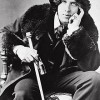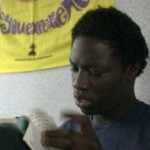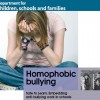Safe to Learn: Embedding anti-bullying work in schools The guidance is split into 3 sections 1) Advice for Governors 2) Advice for Senior Head and Management Staff 3) Advice for Teachers and School Staff Each section covers: The Legal Framework Recognition Prevention Responding Monitoring To downlaod the pdf, click on the image.
About Beajas
I&DeA 2007: Sexuality – The New Agenda (Guide for LEAs)
A guide for local authorities on engaging with lesbian, gay and bisexual communities originally published in 2003, and then again in 2007. The guide does not aim to deal with transsexual/transgender communities, for whom there are separate legal arrangements1. However, it is recognised that some local authorities have chosen to adopt policies that are inclusive […]

KS3: History – ‘Hidden Histories’
Over the last fifty years the study of the past has begun to look at people from groups not previously given much attention by historians, including: • Women’s History • Working people’s History • Black History • Native American History • Non-Christian History • LGBT History This lesson ask learners to consider why the history […]
You talk about ‘preparing’ children. Is being gay really that shocking?
The idea that some men are attracted to other men is certainly not new to our times, but some children grow up in houses, and attend schools where they do not see, hear or learn about people who are gay. A child will only believe that seeing two men holding hands is wrong, until s/he […]
English Lesson: Coronation Street Stereotypes
Lesson Title: Coronation Street (Stereotypes) Subject:English Overview: Learning objectives Get students to: • give individual responses to a written text (AT 1 and 2) • develop inference and deduction (AT 2) • understand more complex sentences (AT 3) • look at humour in writing (AT 1 and 2) • examine stereotypes (AT 1 and 2) […]
Recent Videos
Recent Posts
- KS4 English – Shakespeare, Sonnets and Sexuality
 NO OUTSIDERS IN OUR SCHOOLS Teaching the Equality Act in Primary Schools & RECLAIMING RADICAL IDEAS IN SCHOOLS Preparing Young Children for Life in Modern Britain By Andrew Moffat
NO OUTSIDERS IN OUR SCHOOLS Teaching the Equality Act in Primary Schools & RECLAIMING RADICAL IDEAS IN SCHOOLS Preparing Young Children for Life in Modern Britain By Andrew Moffat PSHE – Alphabet Soup
PSHE – Alphabet Soup KS3 – PSHE – Shark Bait
KS3 – PSHE – Shark Bait KS4 – PSHE Omar: Young, Gifted and Gay 2 Part 1
KS4 – PSHE Omar: Young, Gifted and Gay 2 Part 1
Tags
SUBMIT YOUR OWN
COPYRIGHT STATEMENT
If copyright is claimed in any photograph which appears on this website, please contact us and we will happily remove it.
Subscribe / Connect
Subscribe to our e-mail newsletter to receive updates.



